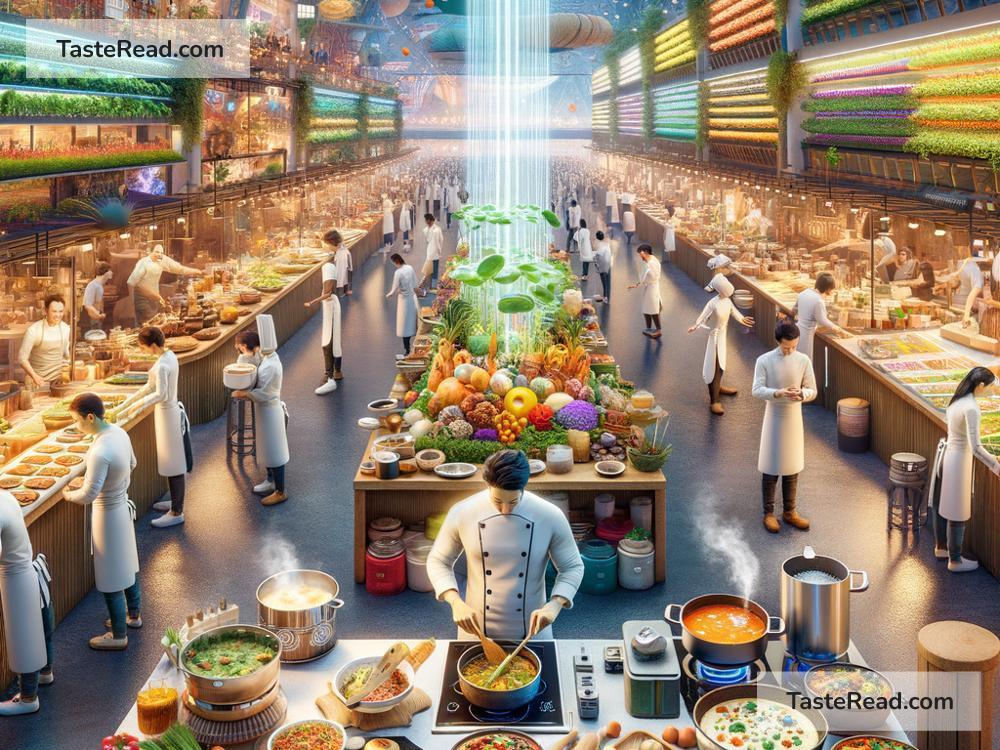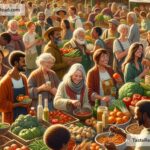The Future of Food and Cultural Preservation: A Taste of Tomorrow
Food is more than just fuel for our bodies; it’s a powerful symbol of who we are. Recipes tell stories from the past, connect us to our ancestors, and remind us of the unique traditions that define cultures all over the world. But as we look ahead into the future, the way we grow, cook, and eat food is changing—driven by technology, climate change, and globalization. What does this mean for preserving cultural identity in food? Let’s explore how the future of food can balance innovation and tradition.
The Changing World of Food
The way we produce food today is under a lot of pressure. Issues like climate change, growing populations, and limited resources have pushed scientists and farmers to find new methods to feed the world. Here are some of the biggest innovations shaping the future of food:
-
Lab-Grown Foods and Plant-Based Proteins:
In the future, we might see more lab-grown meat and fish on our plates, food that looks and tastes just like the real thing but is created with fewer environmental impacts. Plant-based alternatives, such as burger patties made from peas or mushrooms, are already popular in many supermarkets. -
Vertical Farming and Smart Agriculture:
With less farmland available, vertical farming (stacking crops in indoor spaces) is a smart way to grow food. Technology like drones and data sensors help farmers grow better crops with less waste. -
Edible Innovations:
Have you ever thought about eating crickets or algae? These sustainable foods are packed with nutrients and require less space, water, and energy to produce. They could become common ingredients in tomorrow’s meals. -
Food Personalization:
Imagine a world where you can design foods specifically for your body’s needs. 3D-printed foods and tailor-made diets could make eating healthier and more efficient.
While these innovations sound exciting, they also come with important questions: Will these futuristic foods maintain their place in traditional meals? Will cultural cooking methods survive alongside lab-created alternatives?
The Role of Food in Cultural Identity
Cooking and eating are not just practical activities—they are deeply connected to how people express their cultural identity. Gatherings over home-cooked meals, cooking techniques passed down for generations, and eating specific foods during holidays help bring families and communities together. Think of dishes like Mexican mole, Indian tandoori chicken, or Ethiopian injera. Each tells the story of where it came from.
Globalization has allowed people to share and enjoy food from other cultures easily. It’s why sushi in Japan or pizza from Italy can now be enjoyed almost anywhere. But globalization also brings challenges. When traditional recipes are adapted for mass production, they can lose their authenticity and cultural meaning.
Future Food vs. Tradition: How Can They Coexist?
Can the future of food embrace new technologies while still preserving cultural heritage? Absolutely! Here are some ways to balance innovation and tradition.
-
Documenting Recipes and Techniques:
Using videos, cookbooks, and digital archives, communities can record their food traditions for future generations. Even with new ingredients or cooking methods, these recipes will keep their authenticity. -
Fusion Foods:
Cultures have always borrowed from each other when it comes to food. Fusion recipes—where modern technology meets traditional flavors—can help preserve cultural tastes while adapting to new types of food. A lab-grown burger, for example, could be seasoned with spices unique to specific regions. -
Educating the Next Generation:
By teaching children how to prepare traditional meals and explaining their importance, families can ensure cultural cooking methods don’t fade away. Festivals, local events, and school projects are perfect opportunities to share these stories. -
Respecting Ingredients:
While lab-grown crops and alternative proteins are on the rise, it’s vital to respect original ingredients tied to cultural recipes. For example, bread might be modified in various forms, but respecting traditional grains like millet or teff keeps cultural links alive. -
Collaborating Across Cultures:
Food professionals, like chefs, farmers, and researchers, can work together with cultural leaders. This collaboration allows for the inclusion of traditional knowledge in modern food systems.
Technology Can Empower Cultural Food
Technology doesn’t have to threaten cultural food traditions—it can empower them. For example, artificial intelligence can create recipe databases that are searchable by culture, region, and flavor. Apps and social media platforms can make it easier to learn cooking techniques from anywhere in the world. Technologies for preserving food can ensure traditional ingredients and rare spices are available and accessible, even far from their countries of origin.
A Bright Future for Food and Culture
The future of food will look very different from today, but that doesn’t mean we have to lose our connection to the past. By accepting change while celebrating traditions, we can make sure that cultural heritage remains strong—even in modern kitchens. Food is a bridge between generations and nations, and finding ways to preserve its meaning will help keep cultures alive as the world moves forward.
So whether we’re biting into a lab-grown dumpling or savoring a handmade tortilla, let’s remember the stories and identities tied to what’s on our plate. Because food is not just about innovation or survival—it’s about keeping the spirit of humanity alive.


